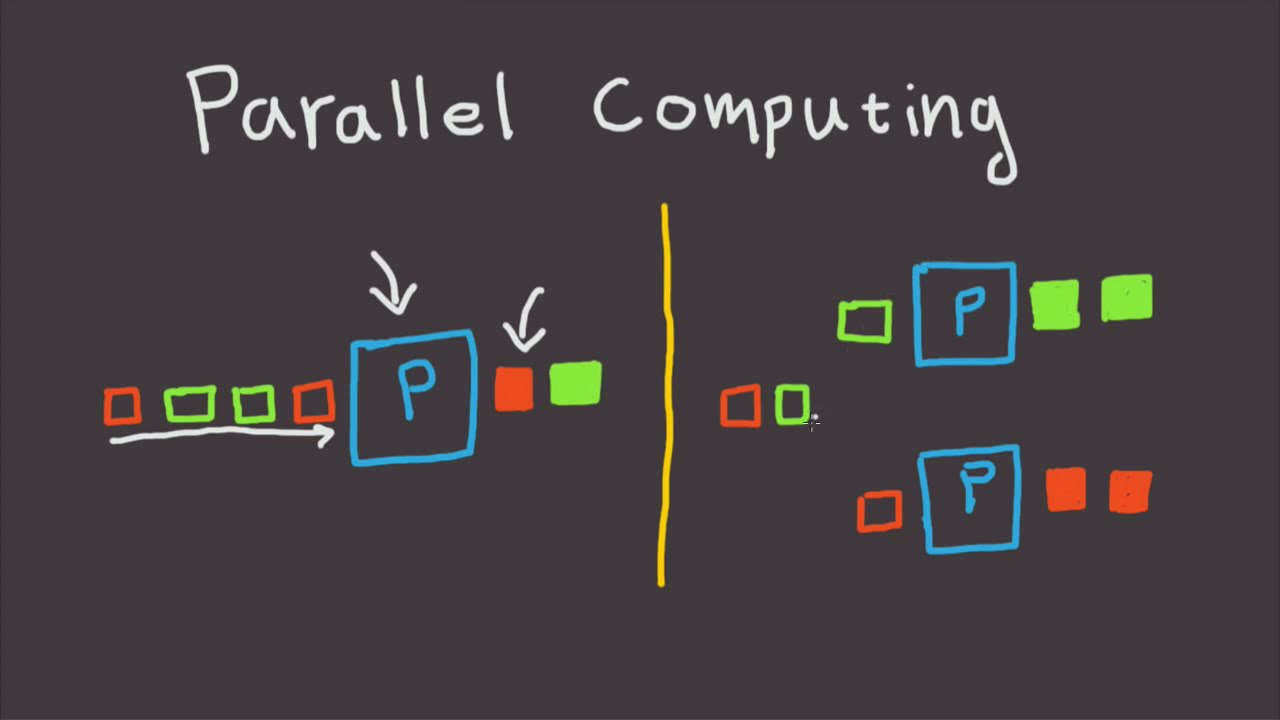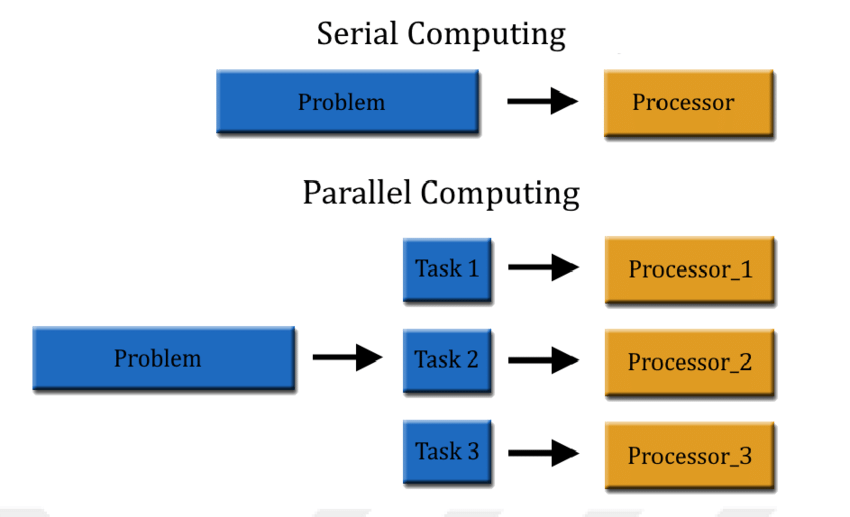- Parallel computing is type of computation in which many calculation or processes are carried out simultaneously.
- Large problems are divided into smaller ones, which can then be solved at the same time.
- This methods leverages multiple processing element concurrently to solve a problem more quickly than with a single processor.
Concrrency and Parellelism
Concurreny
- Refers to the ability of a system to handle multiple tasks or processes simultaneously.
- Task may not necessarily executes at the exact same time, but they progress in overlapping time periods.
- Multiple tasks can run in overlapping time periods, but not necessarily at the same time. This can create the illusion of parallel tasks running because of the CPU's rapid switching.
- Focuses on managing and coordinating multiple tasks.
- Can be achieved on a single-core processor through context switching.
Parallelism
- Involves actually executing mulitple tasks or parts of tasks simultaneously.
- Requries mutiple processing units (e.g. CPU cores, GPUs) to execute truly in parallel.
- Is a subset of concurrency - all parallel execution is concurrent, but not all concurrent exeution is parallel.
Key distinctions:
- Execution: Concurrency is about dealing with lots of things at once, while parallelism is about doing lots of things at once.
- Hardware requirements: Concurrency can be implemented on a single-core processor, while parallelism requires multi-core processors or distributed systems.
- Goal: Concurrency aims to improve responsiveness and manage multiple tasks efficiently, while parallelism aims to improve performance by splitting tasks into smaller parts that can be processed simultaneously.


Welcome to here!
Here we can learn from each other how to use SiYuan, give feedback and suggestions, and build SiYuan together.
Signup About